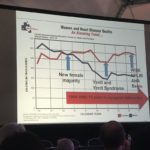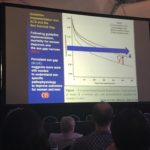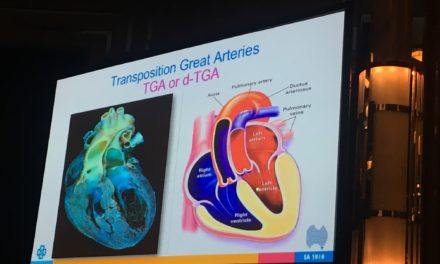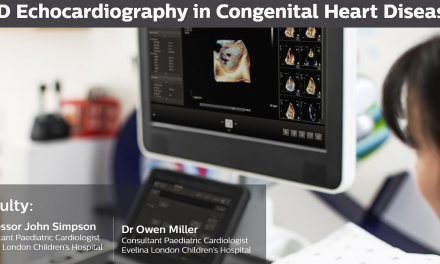
The Port Douglas Heart Meeting was a wonderful event filled with diverse and entertaining presenters with paradise as a backdrop. I found the whole meeting was interesting and informative, although, some of the more technical lectures went over my head! The lectures that were of most interest to me was the special symposium on Women and cardiovascular disease.
Monet or Manet? What’s different about women and how to recognise female-pattern cardiovascular disease?
Presenter: Noel Bairey Merz
- In the mid 80’s more women than men began to die from CVD, this gap had continued to widen since then.
- Women have a more adverse CHD prognosis.
- Why??
- Gender differences in management, women have complex social networks and responsibilities (children, husbands, friends and extended family), men (often) have a wife!
- Female pattern CAD is often microvascular CAD – not recognised or treated as CAD.
- Guideline care (aspirin, statins, ACE inhibitors and B Blockers) not prescribed as non obstructive CAD.
- The WARRIOR study: Women’s ischaemiA TReatment Reduces Events In non-ObstRuctive CAD trial
- 4422 subjects with angina, no obstructive CAD randomised to IMT (intensive statin and ACE/ARB) vs UC (usual care, primary risk factor management) for reduction of MACE (all cause death, non fatal MI, stroke, or hospitalisation for angina or HF).
- Historically, women have been underrepresented in clinical trials when compared with the disease and mortality rate.
CV disease in women – can pregnancy predict future risk?
Presenter: Carole Warnes
- Could it be a “chicken or egg’ scenario? Does pre-eclampsia predispose a woman to CVD or does having CV disease risk factors predispose a woman to developing pre-eclampsia?
- Women who have had pre-eclampsia have a 3x higher risk of future hypertension and a 2x higher risk of DM.
- The earlier the onset of pre-eclampsia, the higher the risk of developing CVD.
- Independent of other risk factors (HTN, ^BMI, smoking and DM), a history of pre-eclampsia gives a 4x greater risk of IHD.
- Patients that have had placental syndrome (placental abruption, infarct, early delivery and poor foetal growth) are 2x more likely to develop CAD by the age of 38.
- These risk factors are additive; pre-eclampsia + low birth weight + early delivery = 7x greater risk of CAD.
- Pregnancy could be seen as a cardiovascular stress test, which when “positive” sets a chronic disease trajectory.
- Women have an increased rate of heart failure post MI.
Are arrhythmias different in women?
Presenter: Sam Asirvatham
- There appears to be a testosterone linked shortening of the QT interval.
- Repolarisation reserve is the ability for the QT to remain normal under stress.
- Repolarisation reserve is different in men and women.
- In women, the baseline QT is prolonged, MI increases QT further, therefore further increasing the risk of ventricular arrhythmia.
- Women have an increased risk of repolarisation arrhythmia.
- Ashman’s phenomenon; a pause in AF with an increased rate with a wide complex beat with a RBBB morphology. In these are not VEs, rather, an abhorrent conduction.















